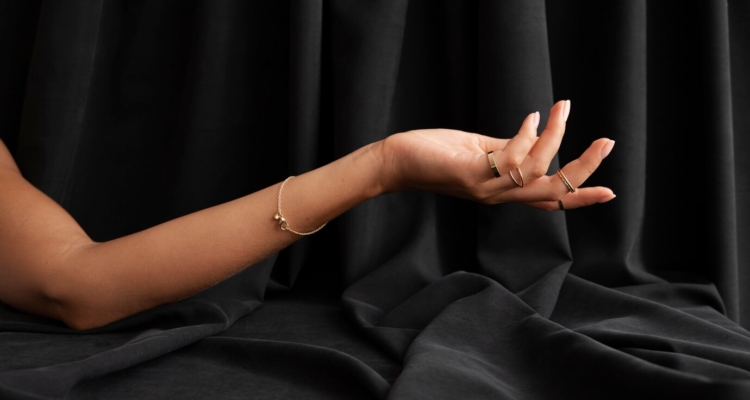Retouching newborn photos is a delicate art that requires precision, patience, and a keen eye…
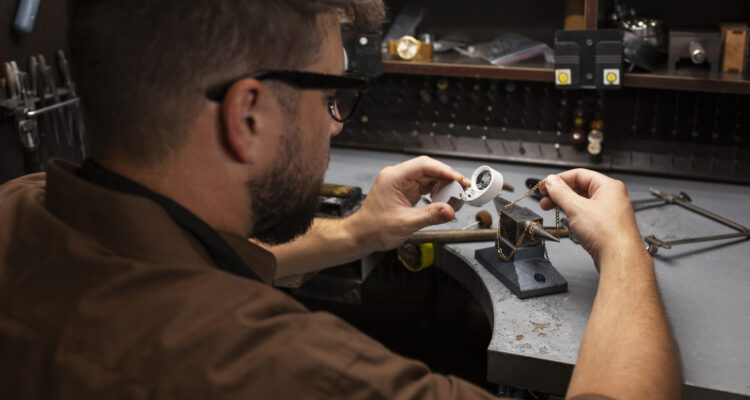
Master Diamond Polishing: Sparkling Jewelry Photos
Diamonds are popular in jewelry because they are very hard and shiny. However, imperfections like flaws and scratches can make them less brilliant. Master diamond polishing is the art of restoring this sparkle, making it crucial for jewelry photography. We will talk about why diamond polishing is important, the science behind it, and the tools and techniques needed to make diamonds shine.
Understanding the Importance of Diamond Polishing

Diamond polishing is what brings out the best appearance of the diamond. It can make all the difference between a dull lifeless stone and that which is radiant, full of fire. The process involves the removal of impurities, scratches, and other imperfections obscuring the real beauty of the diamond. Not only are well-polished diamonds a beauty to one’s eyes, but they also hold much more value than the not-so-well polished. It is the polished diamond that creates those excellent picture qualities in jewelry photography.
If a diamond isn’t polished, then it’s going to appear very dull. Indeed, this seems to be the case for many photographers who find it hard to capture the real beauty of the diamond. If a diamond isn’t polished, then its imperfections can be emphasized, making it hard to project its inner brilliance. A photographer will want the best preparation possible on his diamond subjects for photography. It is important to understand the importance of diamond polishing. Diamond polishing transforms a diamond into a beautiful, sparkling gem. This process showcases the true beauty of the diamond.
The Science Behind Diamond Polishing

Polishing a diamond is complex, so it’s important to understand the science behind it. In essence, diamonds are made from pure carbon that has been put through extreme heat and pressure over millions of years. The natural process forms a diamond’s crystal structure, making it extremely hard and shiny. The task is to clear the impurities and imperfections within without fracturing the crystal structure. This requires a fine balance between precision and technique, between knowledge of the diamond’s natural cycle.
Applications are done to produce the expected finish. This will involve coarse polishing using diamond-coated wheels, finish polishing by cerium oxide, and finally, diamond paste polishing. Handling the diamond with utmost care is essential to prevent scratches or mistakes during the process. To polish well, polishers must know the best methods to make stones shine brightly.
Successful polishing demands both understanding the peculiar properties of diamonds and the art of exact control in using them. A polisher must read the diamond crystal structure to know exactly how to modify techniques accordingly. This includes years of practice, patience, and dedication to the craft.
The Different Stages of Diamond Polishing
Diamond polishing comprises several stages in its procedure. Various methods and tools are used in the process, all of which must be flawless to achieve a perfect result.
1. Rough Polishing
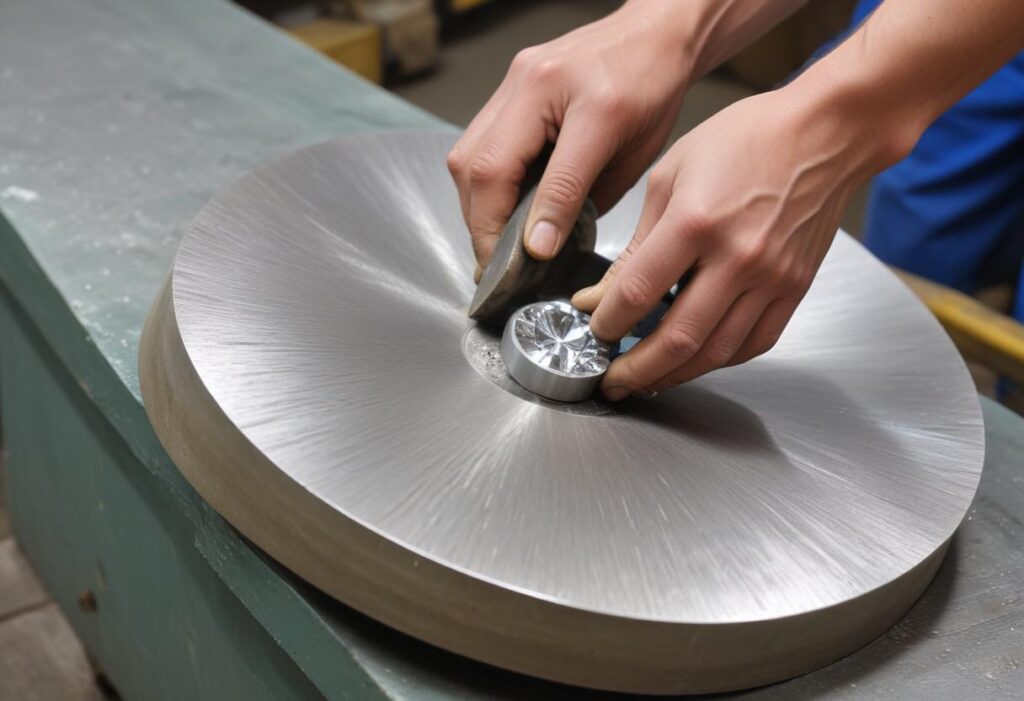
The first step, which is rough polishing, removes large scratches and imperfections from the diamond. In this stage, diamond-coated wheels are used to grind away big flaws on the surface and to shape the diamond. The main goal of this process is to prepare the diamond for polishing. This involves addressing major issues and laying the groundwork for minor enhancements.
Fixing significant problems is the first step in the process. This sets the stage for making smaller improvements later on.
2. Fine Polishing
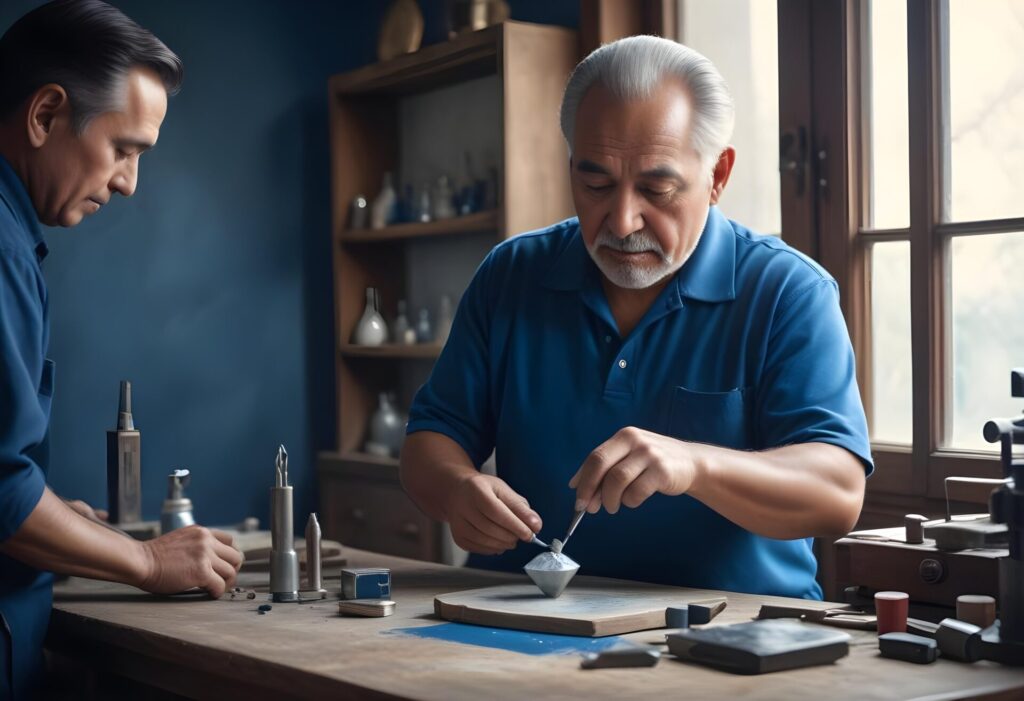
In the next step of polishing, cerium oxide will be used to get rid of small imperfections left from the first polishing. This will further refine the diamond surface, giving the stone greater brilliance. Polishing makes the diamond smoother and removes scratches and blemishes, making it look more even. This prepares the diamond for the final polish.
3. Final Polishing
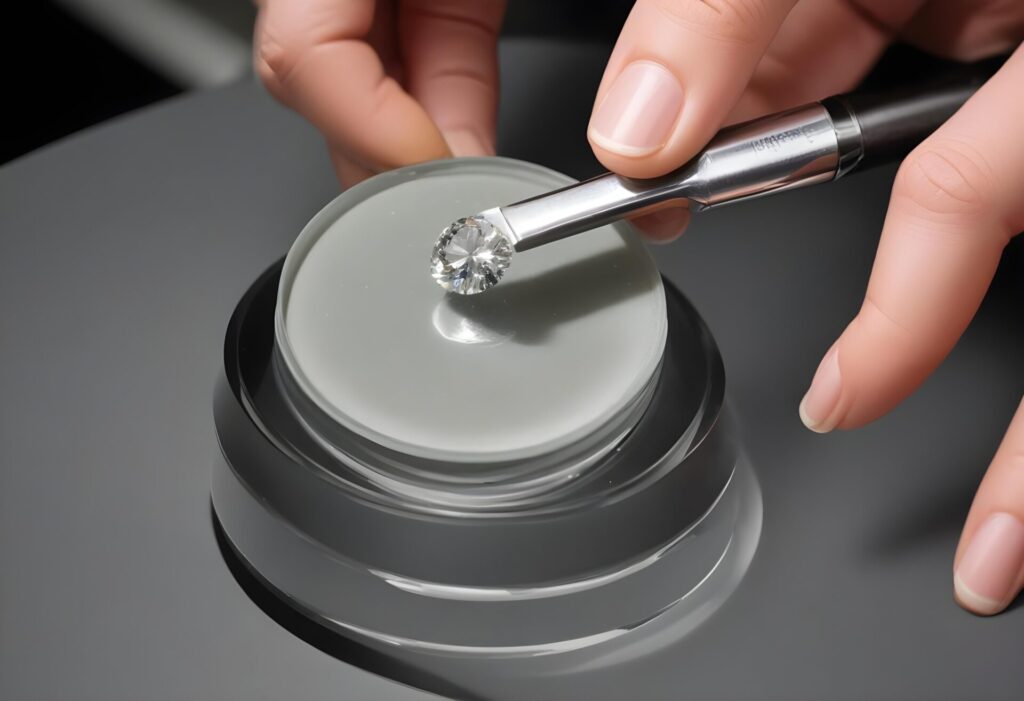
The final polishing, the last stage, involves diamond paste to create a high polish. It provides the diamond with its final shine and sparkle. The diamond paste smoothens the surface perfectly to mirror-like and gives the diamond to shine brilliantly and with clarity.
Each step of polishing a diamond needs careful control and a keen eye to prevent damage and introduce new flaws. Knowing these stages will, then, give meaning to fineness and the skill required to achieve a perfectly polished diamond.
Pre-Polishing Preparation: Cleaning and Inspection
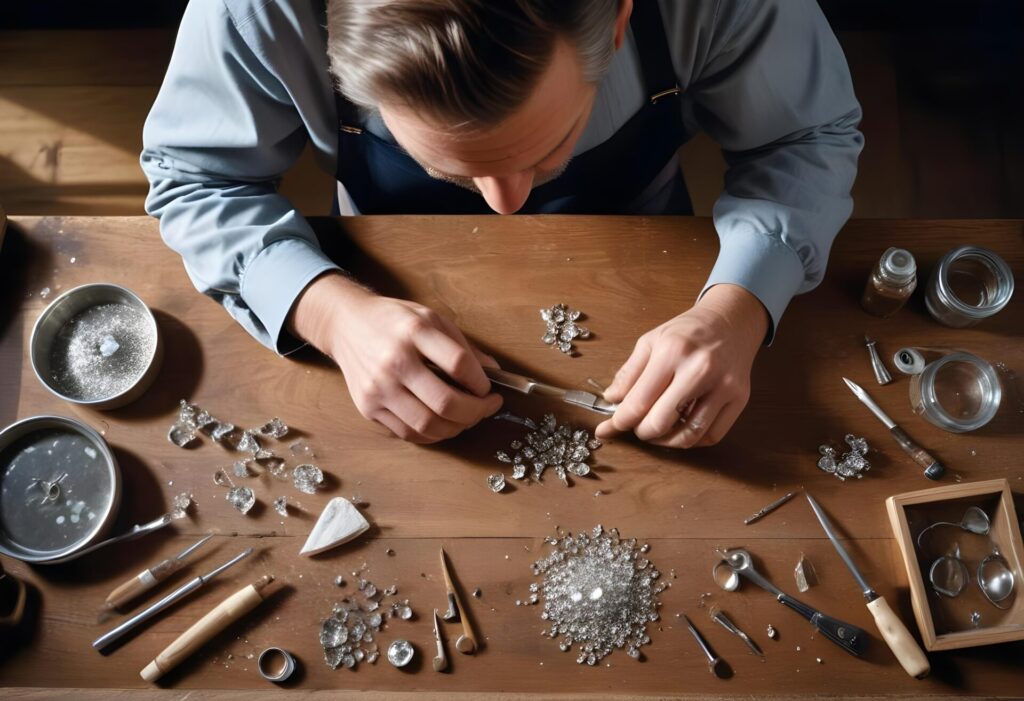
The stone must be thoroughly cleaned and free from impurities before the polishing process. It is checked for scratches, inclusions, or cracks, then cleaned to remove dirt, oil, or substances that could affect the process.
Cleaning and inspection are crucial stages. A perfectly clean and flawless stone ensures a high-quality finish. Without proper cleaning and inspection, the polishing may be compromised, resulting in an inferior finish.
This step is crucial for ensuring the stone is clean and flawless. It allows for a shiny finish and enhances its appearance. This process is essential for achieving the best possible look for the stone.
Techniques and Tools in Diamond Polishing
Diamond polishing is a complex skill that involves understanding diamonds and using different techniques and tools. Polishers use rough, fine, and final polishing to get the desired finish. They use tools like diamond-coated wheels and cerium oxide to remove impurities.
- Diamond-Coated Wheels:
Diamond-coated wheels are essential tools in the rough polishing stage, featuring abrasive surfaces embedded with diamond particles. These wheels are made to fix big scratches and shape diamonds by grinding them. They are very hard and abrasive, so they work well at getting rid of major flaws and getting the diamond ready for polishing.
- Cerium Oxide:
Cerium oxide is a crucial polishing compound used in the fine polishing stage. This compound is employed to smooth out smaller scratches and imperfections that remain after the initial rough polishing. By applying cerium oxide, diamond polishers refine the diamond’s surface, enhancing its natural glow and brilliance. This stage ensures a more uniform and reflective surface, setting the foundation for the final polishing process.
- Diamond Paste:
Diamond paste is used in the final polishing stage to achieve a high-gloss, mirror-like finish. This paste smooths the diamond’s surface, removing imperfections and adding shine. It makes the diamond sparkle and look clear, giving it a polished appearance that enhances its beauty.
Common Mistakes to Avoid During Diamond Polishing
Diamond polishing is such an operation that requires precision and focusing on minute details. Diamond polishers should avoid scratching the diamond, using the wrong polishing compound, and applying too much pressure. Using the wrong compound or too much pressure can lead to scratching the diamond. The result will then be a finish that is very dull and really lacks shine, which at times can be hard to rectify. The people who polish diamonds must be very cautious with the polish used and the amount of pressure applied, lest they scratch the diamond.
Another very common mistake is misusing the polishing compound. Diamond polishers need to be most careful in choosing the right polishing compound for the type of diamond being polished. Now, using the wrong compound is going to lead to a type of finish that may not suit the unique properties of the diamond.
Lastly, application of excessive pressure on the diamond is one of the common mistakes during diamond polishing. When polishing a diamond, it is important to be gentle and not apply too much pressure. This can cause damage or create new imperfections. By avoiding common mistakes during polishing, you can achieve a high-quality finish that highlights the diamond’s natural beauty.
Advanced Diamond Polishing Techniques
Polishing a diamond involves more than just removing defects; it’s also about enhancing its natural brilliance. Advanced methods enhance a diamond’s shine and brilliance by using special polishing compounds, precise pressure, and advanced tools.
Well, specialized polishing compounds will do a great extent to increase the brilliance of the diamond, thereby revealing the inner sparkle. To polish a diamond without harming it, precise pressure is needed. Advanced technology, like diamond-coated wheels and cerium oxide, ensures a flawless finish. This helps enhance the diamond’s natural beauty and prevents new flaws from forming.
Conclusion
The key to capturing stunning diamond jewelry photography lies in masterful polishing. This process transforms a dull stone into a dazzling, radiant gemstone by enhancing its natural brilliance. Learning about the science, techniques, tools, and methods used to reveal a diamond’s beauty. Mastering these aspects helps photographers capture the diamond’s sparkle and transparency, showcasing its full potential.
Read Next: Enhance Jewelry Photos with Stone Color Correction

